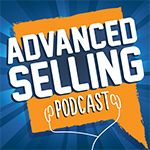
A few years ago, I did a Webinar called “How to Sell A Premium Product in a Commodity Market.” It was one of our best attended webinars we’ve ever done.
Lots of interest in the topic – and I believe I know why.
In this article, I want to update some of the content and give you a couple more ideas. I picked this topic because it is an ongoing area of concern for sales people – how to sell a premium product into a market that sees price as THE main driver.
Why it’s so tough.
Think about it. We live in a “price leads” society. Advertisers have led us on a race to the bottom by the constant drumbeat of, “Lowest Prices In The Industry!” Or, “We’ll Beat ANY Price!” I know you’ll say, “But I’m not in the retail game.” No, you aren’t. But do you see the attitude that they’ve placed in the minds of buyers?
So the context is that even though your buyer might not jump to “What’s your price?” they certainly have it on their radar.
Here are four notions that I suggest you consider as you extract yourself form the “commodity dungeon” where the only important issue is price:
1. Position Your Self Properly.
Interesting thing about positioning is that it’s not just about what you say – it’s about how you say it. Sales people spend so much time concerned with the “what” and ignore the “how.”
And that’s wrong.
 Regardless of your word choice (you’ll have to decide that), the essence of your message should be centered around ‘the types of problems that you solve.’ That’s right – no enthusiastic sales pitches about how great you are – or how smart your team is. None of that.
Regardless of your word choice (you’ll have to decide that), the essence of your message should be centered around ‘the types of problems that you solve.’ That’s right – no enthusiastic sales pitches about how great you are – or how smart your team is. None of that.
Frame your ‘premium value’ around the pains and problems that prospects face. Some of those problems they know they have. Some they’re oblivious to. But either way, begin the conversation there.
Be a problem solver not a product seller. There is a trap waiting for you. The prospect sets it and you fall right into it. It happens when the prospect shows interest and you default to “the pitch.”
Instead, when your prospect shows interest in the types of problems you solve, refrain from pitching the product and spend more time diagnosing what that problem means to him. This one thing can do more to change your position (in the prospect’s mind) and help them see that your premium fee is worth it.
Read more

 Calling all Sales Managers: there’s an art to coaching your team after the ride along. In this episode, veteran sales trainers Bill Caskey and Bryan Neale talk to Sales Managers with tips (and things not to do) when coaching after a ride along experience. This episode isn’t about the ride along itself— it’s about what happens when you get back in the car.
Calling all Sales Managers: there’s an art to coaching your team after the ride along. In this episode, veteran sales trainers Bill Caskey and Bryan Neale talk to Sales Managers with tips (and things not to do) when coaching after a ride along experience. This episode isn’t about the ride along itself— it’s about what happens when you get back in the car.


 Regardless of your word choice (you’ll have to decide that), the essence of your message should be centered around ‘the types of problems that you solve.’ That’s right – no enthusiastic sales pitches about how great you are – or how smart your team is. None of that.
Regardless of your word choice (you’ll have to decide that), the essence of your message should be centered around ‘the types of problems that you solve.’ That’s right – no enthusiastic sales pitches about how great you are – or how smart your team is. None of that.